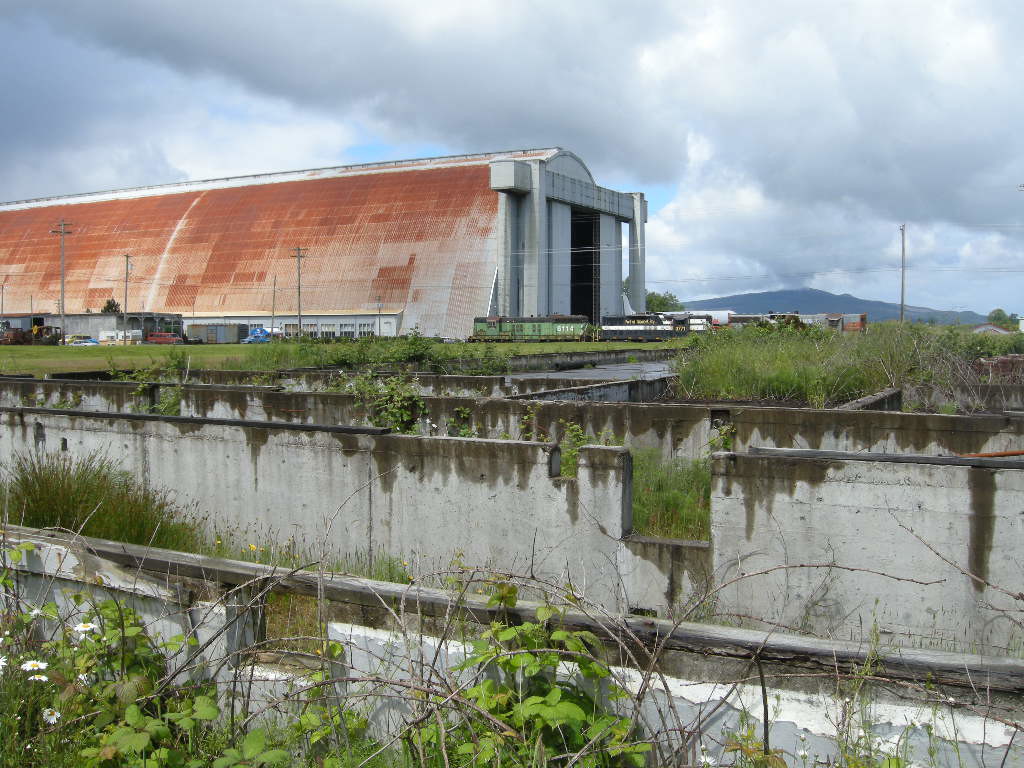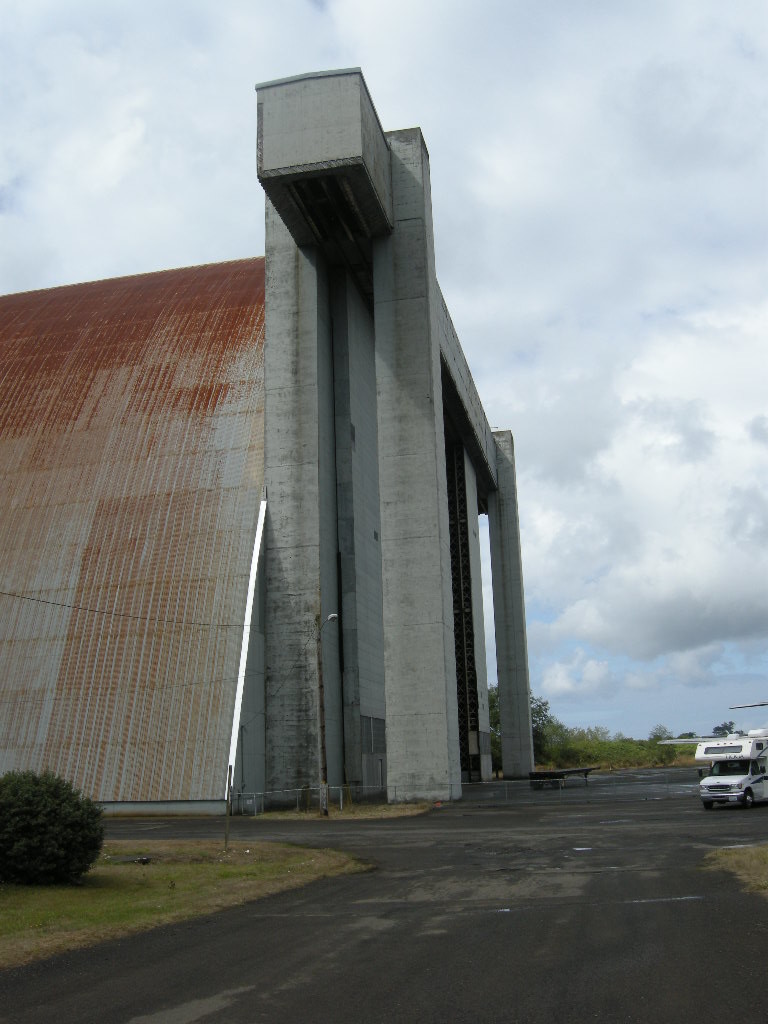The Blimp Hangar, Naval Air Station Tillamook
Without considerable effort, the Guinness Book of World Records’ largest wooden structure, and the most extant naval air station from World War II is endanger of disappearing.

Commissioned in 1942 and operational through 1949, the Naval Air Station Tillamook (NAS) is a 1,600 acre site comprised of buildings, structures, landscape features, as well as a current active runway. A smaller 400 acre site has been designated an eligible historic district. The original use by the NAS Tillamook contained 32 defense, eight industrial, five government, four transportation, three commercial, three agricultural, three residential, two recreation and culture, one education, and one utilitarian structures, plus one cemetery. The most significant structures include the airfield, Hangars A & B, ammunition magazines, and structures that supported the operation of the Naval Air Station. Many of the buildings may be the only remaining example of their kind. Much of the site is still operational: the roads, sidewalks, water power sewer and utility lines, as well as the railroad infrastructure were constructed by the US Navy remain on site and are character defining features.
Hangars A & B were built for “K type” dirigibles that are steerable, non-rigid, lighter than air aircraft used for naval air patrol of enemy submarines. During World War II, the hangars served as mooring and maintenance sites for two squadrons of dirigibles that patrolled the coast line from the Strait of Juan de Fuca to California. A fire in 1992 destroyed Hangar A. The remaining U.S. Naval Air Station Dirigible Hangar B, is the world’s largest wooden clear-span structure measuring ¼ mile long and 23 stories in height. Its construction technique is considered both resourceful for war time efforts and an innovative structural solution. Incredibly, the hangar was completed in just 90 days.

Hangar B reflects the unique challenges associated with super-sized historic properties. Monumental historic properties pose significant management, maintenance, and financial challenges to the long-term stewardship of such properties. Aging infrastructure, 70 or more years of service-life, and limited lease markets for using enormous structures increasingly place pressures on the decisions to retain the resources. Despite the desire to be good stewards, large properties rarely generate sufficient funding to go beyond very basic emergency and/or minor piece meal repairs. Straight forward maintenance items, like new roofing or painting, can cost several million dollars.
 Creative, multi-jurisdictional, community involvement, private / public partnerships, government programs, and national and international marketing campaigns have become key elements to long range cultural resource management plans. The unique structures require innovative solutions matching the monumental character and commanding presence. Success stories abound from the saving of West Baden Springs Hotel in French Lick, Indiana to Centennial Hall in Wroclaw, Poland. The efforts to retain the giant structures are well deserved, because the continued loss of such buildings diminishes our understanding of world events.
Creative, multi-jurisdictional, community involvement, private / public partnerships, government programs, and national and international marketing campaigns have become key elements to long range cultural resource management plans. The unique structures require innovative solutions matching the monumental character and commanding presence. Success stories abound from the saving of West Baden Springs Hotel in French Lick, Indiana to Centennial Hall in Wroclaw, Poland. The efforts to retain the giant structures are well deserved, because the continued loss of such buildings diminishes our understanding of world events.
To learn more about PMA’s experience at the Port of Tillamook Bay, please visit: PMA + PoTB
Written by Peter Meijer AIA, NCARB, Principal
